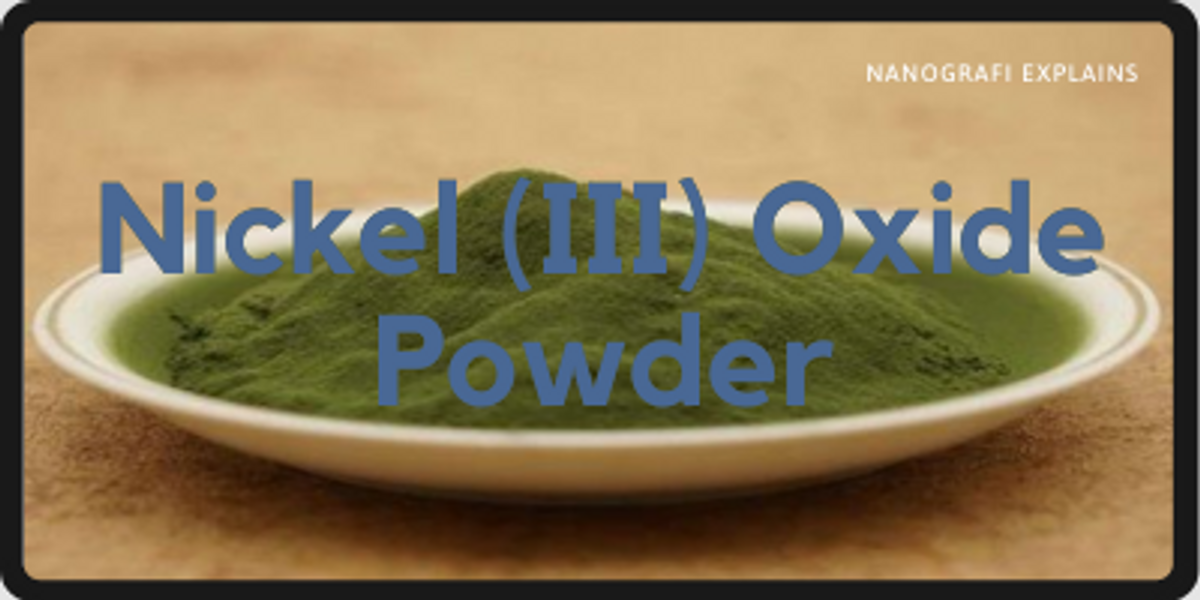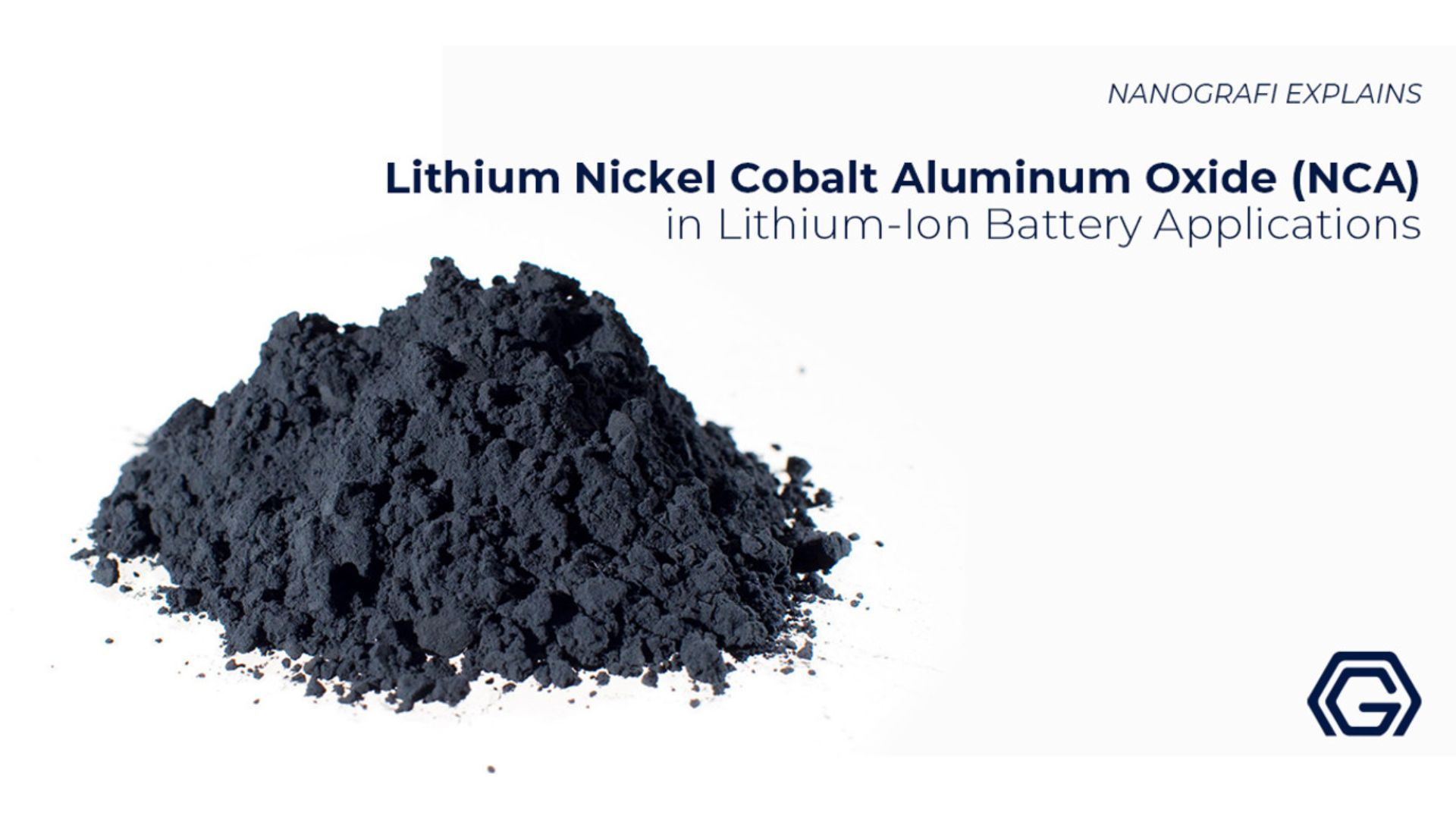Nickel Oxide Powder and Its Applications
Metallic oxide powders represent a very interesting area of research due to their unusual magnetic,electrical, optical, and thermal properties.
These properties are highly dependent on the size, structure, morphology and accordingly on their mechanism of synthesis. These outstanding properties originate from quantum effects which can be associated with their very high surface area to volume ratio.
Introduction
Metal oxide powders have drawn great attention by the scientists in order to utilize them in a range of applications. It has been considered that metal oxide powders could be used in applications that require small size, with precise control of size, composition, and morphology in chemically significant quantities. Among metal oxide powders, Nickel (Ⅲ) Oxide powders exhibit quite interesting chemical, electrical, optical, and catalytic properties. The prospects for using powder-materials in number of applications is widely researched today across multiple domains such as physics, chemistry, biology, toxicology, cosmetics and so on. Nickel oxide powders show many unique optical, magnetic, electrical and chemical properties, and thus, these powders have great potential in applications such as ceramic materials, electronic components, sensors, magnetic data storage materials and catalysts.
Overview of Nickel Oxide
Nickel (Ⅲ) Oxide is a chemical compound with the symbol Ni2O3. It is an important transition metal oxide with a cubic lattice structure. Nickel is a block D, period 4 element, while oxygen is a block P, period 2 element. Ni2O3 is classified as a basic metal oxide, and the principle oxide of nickel. It is generally regarded as not-well characterized oxide of nickel. It has black color and it is insoluble in water but is soluble in acids. Ni2O3 has a melting point of nearly 1985℃ and has a density 6.7 g/cm3. They exhibit anodic electrochromism, excellent durability, electrochemical stability, large spin optical density and various manufacturing possibilities. Nickel oxide powder is also a low-cost material for ion storage applications, also the fact that it is a semiconductor, it becomes an interesting topic in the area of research.
Production of Nickel Oxide
Nickel oxide powders can be manufactured by using thermal decomposition method. In thermal decomposition of nickel oxide, a melt of nickel nitrate hydrate is introduced as droplets or liquid flow into a heated reaction vessel and thermally decomposed in a gas phase at a temperature of 1200℃ or more and at an oxygen partial pressure equal to or below the equilibrium oxygen pressure of nickel-nickel oxide at that temperature to manufacture a highly crystalline fine nickel (Ⅲ) oxide powder with an extremely narrow particle size distribution. The oxygen partial pressure during the thermal decomposition is preferably 10−2 Pa or less, and a metal other than nickel, a semimetal and/or a compound of these may be added to the nickel nitrate hydrate melt to manufacture a highly crystalline nickel alloy powder or highly crystalline nickel composite powder. The resultant powder is suited in particular to thick film pastes such as conductor pastes for manufacturing ceramic multilayer electronic components.
Apart from thermal decomposition method, there are other ways to obtain nickel (Ⅲ) oxide powders. The laser–liquid–solid interaction is a new technique for synthesis of nickel and nickel oxide particles. The process uses a continuous-wave CO2 laser beam as the source of thermal energy required to induce precipitation reactions in solution. The uniqueness of the process is the synthesis reaction taking place in a localized region, which allows better control of the chemical reaction. Porous nickel oxide powders can be synthesized by laser-induced reactions between a nickel nitrate hexahydrate [Ni(NO3)26H2O] precursor and 2-ethoxyethanol-based mixtures. Nickel powders are produced after irradiating a solution of the precursor salt and a 2-ethoxyethanol and d-sorbitol mixture. Crystalline nickel oxide (Ⅲ) powders are isolated after irradiating a solution containing the precursor salt and a 2-ethoxyethanol and water mixture. Powders containing both nickel and nickel oxide crystalline phases were produced after irradiating a solution of the precursor salt and 2-ethoxyethanol. The mean particle diameter is found to be sensitive to irradiation time, substrate thermal conductivity, irradiation power density, and solution concentration. It is hypothesized that nucleation and growth of crystalline phases occurring in irradiated solutions are thermal driven.
To get more information about utilizations of nickel nanoparticle,
you can read our blog post here.
Powders are very useful in any application where high surface areas are desired such as water treatment and in fuel cell and solar applications. Nickel oxide powder has some interesting electrical, mechanical and chemical properties; as a result, they are mainly used in such applications as additives, electronics, energy storage. Many of the most common applications of nickel micron powders involve electronics in some form or fashion. The unique properties of nickel micron powders have made it a popular additive in the manufacture of several different materials, including a variety of ceramics, steels and lubricants. These unique properties of nickel micron powders make them highly valuable in certain industrial applications and for environmental projects.
Nickel oxide powders are used as an electrolyte in nickel plating solutions, an oxygen donor in auto emission catalysts. Also, they can be used in anodizing aluminum, conductive nickel zinc ferrites, in glass frit for porcelain enamel, thermistors, cermet and resistance heating elements. To be more specific, nickel oxide powders are used in preparation of nickel cermet for the anode layer of solid oxide fuel cells, in lithium nickel oxides cathodes for lithium-ion batteries, in electrochromic coatings, plastics and textiles. Besides, it is used as a catalyst and as anti-ferromagnetic layers. Due to their optical properties, they are used in active optical filters, automotive rear-view mirrors with adjustable reflectance, energy efficient smart windows. They are the materials for gas or temperature sensors, such as CO sensor, H2 sensor and formaldehyde sensors. They can be also used as alloying components in metallurgical processes. Thanks to their electrochemical properties, they are used in electrochromic device applications, cathode materials for alkaline batteries.
Toxicity of Nickel Oxide
Nickel (Ⅲ) Oxide, however, may affect the human body as an oxidizing agent, because nickel (Ⅲ) is readily reduced to nickel (Ⅲ) and releases active oxygen in aqueous solutions. Rats which inhaled dust containing a high level of nickel (Ⅲ) oxide were found to suffer injuries to the respiratory organs similar with those of rats which inhaled nitrogen oxides. Nickel oxide powders are graded as very toxic. Long term inhalation of Ni2O3 is damaging the lungs, causing lesions and in some serious cases, cancer. Nickel oxide powders can cause an allergic skin reaction, prolonged harmful effects to aquatic life, and possible damage to organs due to repeated exposure.
Conclusion
In a general way, it can be concluded that the formation of nickel oxide is sensitive to the synthesis conditions. Therefore, before using a synthesis method described in the literature, one should observe the real influence of synthesis conditions such as temperature, stirring and composition of the mixture for an effective control of size distribution and particle shape. Also, it should be considered that nickel (Ⅲ) oxide powders are rather a new research subject in science world. Although nickel (Ⅲ) oxide powders have some outstanding properties, more research should be done in order to enhance the properties and moderate the disadvantages. A lot of researches are still being conducted to improve its properties and lower its manufacturing cost in order to implement its use in more applications. In the coming years, this material will innovate the world of technology due to its unique characteristics.
To get more information, you can visit Blografi.
References
1.Sunderman, F.W., Hopfer, S.M., Knight, J.A., Mccully, K.S., Cecutti, A.G., Thornhill, P.G., Conway, K., Miller, C., Patierno, S.R. & Costa, M. (1987). Physicochemical characteristics and biological effects of nickel oxides. Carcinogenesis 8(2):305-313.
2.Toxicology and Carcinogenesis Studies of Nickel Oxide", U.S. Dept. of Health and Human Services, No. 451, 07/1996.
3.English, J.C., Parker, R.D.R., Sharma, R.P. & Oberg, S.G. (1981). Toxicokinetics of nickel in rats after intratracheal administration of a soluble and insoluble form. Am Ind Hyg Assoc J. 42(7):486-492.
4.Preparation of submicron nickel oxide powders. (1995). Metal Powder Report, 50(5), 45. doi: 10.1016/s0026-0657(99)81039-x.
5.Sawatari, K. (1988). Differential determination of nickel (II) oxide and nickel (III) oxide in airborne particulate substances. Industrial Health, 26(2), 115–123. doi: 10.2486/indhealth.26.115.
6.Mazinanian, N., Hedberg, Y., & Wallinder, I. O. (2013). Nickel release and surface characteristics of fine powders of nickel metal and nickel oxide in media of relevance for inhalation and dermal contact. Regulatory Toxicology and Pharmacology, 65(1), 135–146. doi: 10.1016/j.yrtph.2012.10.014.
Recent Posts
-
Reducing the Carbon Footprint of Nanomaterials
The production of nanomaterials is vital for numerous advanced applications, from healthcare to elec …26th Apr 2024 -
Nanocomposites in Food Packaging
The utilization of nanocomposites in food packaging represents a significant advancement in the fiel …19th Apr 2024 -
What is the Difference Between 7075 and 6061 Aluminum Alloy?
When comparing 7075 aluminum alloy to 6061 aluminum alloy, it's essential to understand their disti …5th Apr 2024







